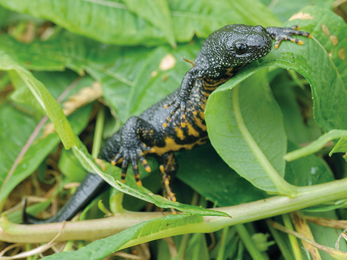Support our Water for Wildlife appeal
Kingcombe National Nature Reserve (NNR) is one of the few places in Dorset where traditional lowland meadow and pasture management, and wildlife-rich landscapes remain largely untouched by modern agricultural practices. The River Hooke, a tributary of the River Frome flowing into Poole Harbour, runs through the reserve and is at the heart of ongoing restoration work.
Under the Water Framework Directive, the River Hooke is classified as ‘moderate’ status. A combination of factors contributes to the Hooke not achieving a ‘good’ status, these include:
- Diffuse sources of pollution from agriculture and rural land management, poor livestock management and poor nutrient management.
- Point sources from water recycling centres.
- Hydrological regime – seasonal variations in flow.
- Historic pollution contributed to failing its chemical water tests, undertaken by the Environment Agency in 2019, for Polybrominated diphenyl ethers (PBDE) and mercury and compounds.
Like many rivers, the Hooke has been historically modified by humans; altering its flow and creating drainage ditches on floodplains to remove water as quickly as possible from neighbouring land. These interventions have reduced its ability to function naturally, reduced habitat diversity, and contributed to downstream flooding and nutrient enrichment in Poole Harbour, a nitrate sensitive zone.
In partnership with Wessex Water, working with landowners and farm clusters, the 11km long river is now part of a larger project - the Frome Headwaters Chalkstream Flagship Restoration Project. Working together at landscape-scale is vital to create change and maximize benefits for nature. With this fantastic work in mind, we also need to do what we can on our own nature reserves. To enhance ecological processes within the river that runs through Kingcombe NNR, Dorset Wildlife Trust is carrying out a programme of river and pond restoration and new pond creation. The work focuses on reinstating natural hydromorphology, increasing habitat heterogeneity, and reducing the flow of nutrients into Poole Harbour.










